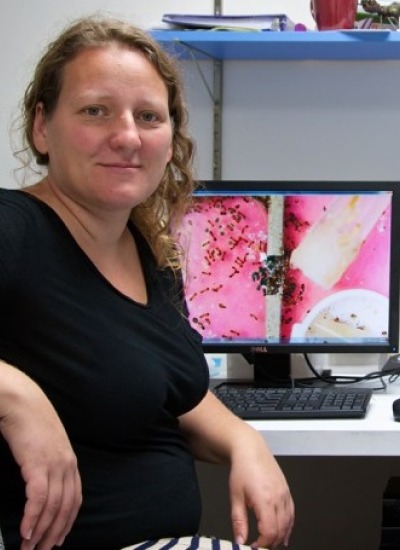Anna R Dornhaus
Publications
Abstract:
Body size is often positively correlated with ecologically relevant traits such as fecundity, survival, resource requirements, and home range size. Ant colonies, in some respects, behave like organisms, and their colony size is thought to be a significant predictor of many behavioral and ecological traits similar to body size in unitary organisms. In this study, we test the relationship between colony size and field foraging distance in the ant species Temnothorax rugatulus. These ants forage in the leaf litter presumably for small arthropod prey. We found colonies did not differ significantly in their foraging distances, and colony size is not a significant predictor of foraging distance. This suggests that large colonies may not exhaust local resources or that foraging trips are not optimized for minimal distance, and thus that food may not be the limiting resource in this species. This study shows T. rugatulus are behaving in ways that differ from existing models of scaling. © 2012 International Union for the Study of Social Insects (IUSSI).
Abstract:
Conspecific ant colonies are often overdispersed, i.e. they are further apart than they would be if they were distributed randomly. This overdispersion might be driven by competition for food resources or nest sites and may result from established colonies preventing incipient colonies from settling too close to them. We investigated another possible mechanism for overdispersion: active nest choice by emigrating colonies. Colonies may be influenced by the presence of conspecifics when they are emigrating from a nest that has become uninhabitable. In the laboratory, we presented Temnothorax albipennis ant colonies with a choice of three new nests, which were equidistant from their old nest site. The new nests were identical except that one was near to an established conspecific colony. The emigrating colonies significantly preferred the new nest site that was furthest from the resident colony. This selection was not just the result of access to the other nests being blocked by aggression from the resident colony; emigrating colonies thus made active choices. Odour cues may influence nest selection: odours left around nest sites by foreign colonies deterred nest occupancy. There was more aggression near the resident colony, but this appeared to be caused by the greater density of resident ants there rather than those ants being more aggressive per capita. We also observed a relatively high proportion of fusions between colonies. Possible reasons for this are considered together with their implications. © 2007 The Association for the Study of Animal Behaviour.


